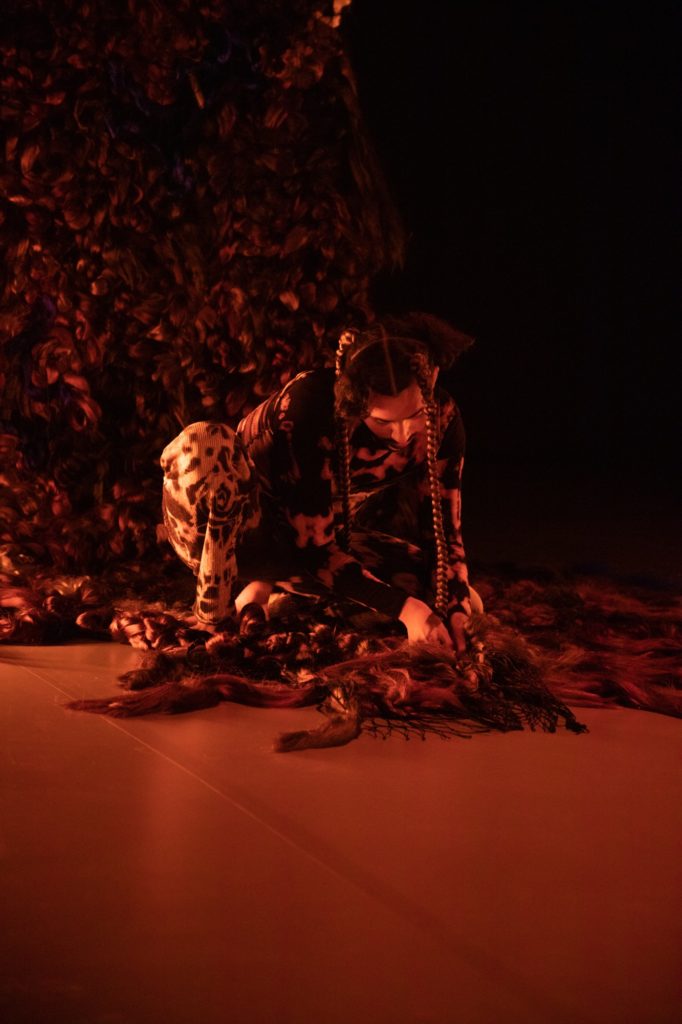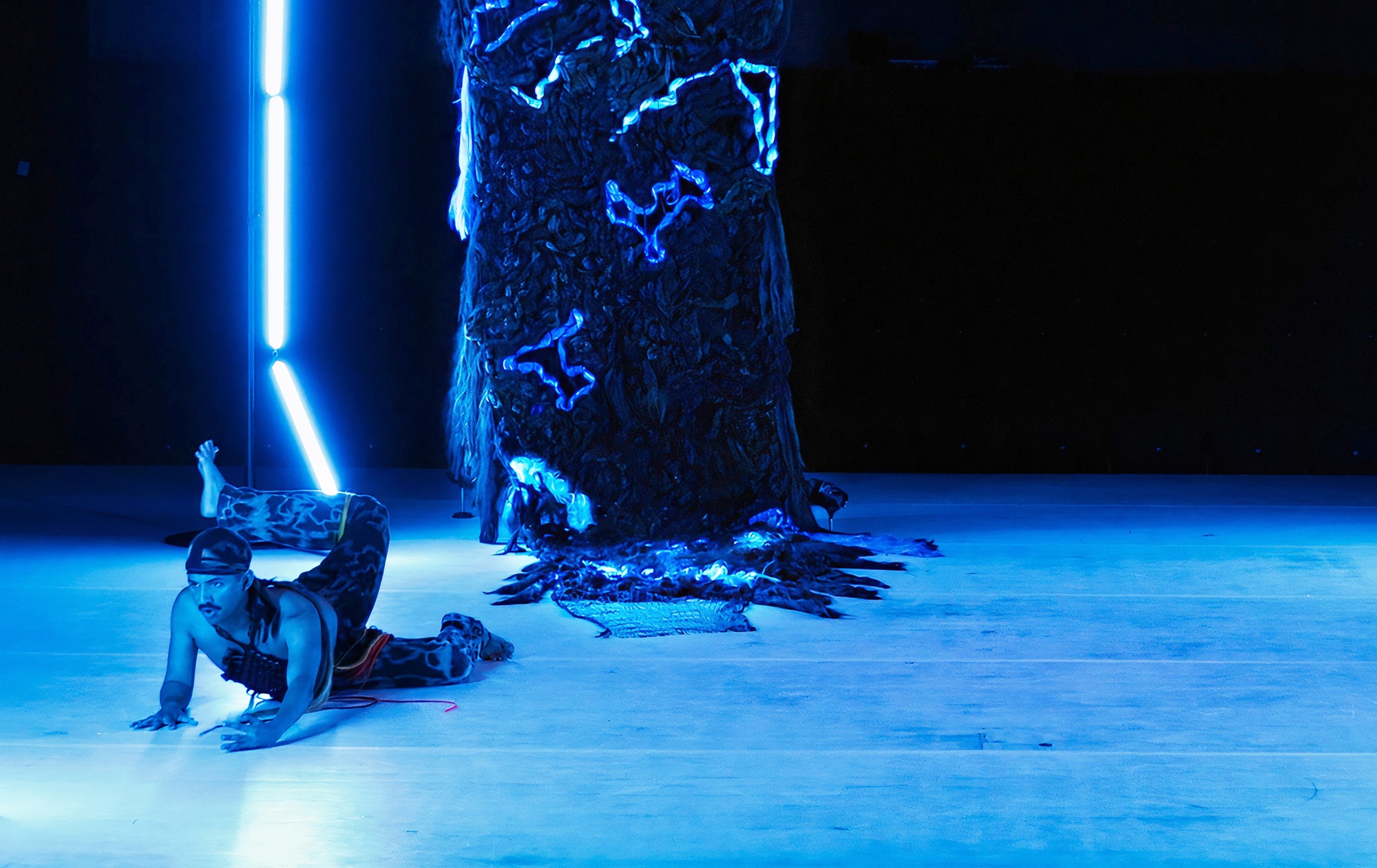Words by Georgia Howlett.
Adam Seid Tahir (they/them) sits to prepare their hair. They apply the oil, smooth it back until it obeys a ponytail. The audience might twitch in impatience, but the sequence has something of a meditation to it, a serene, unhurried pace. Discordant sounds accompany a ritual drawn from the memory of Tahir’s aunt braiding their hair. When Tahir rises, a cap secured, their hands rubbed dry, our attention hangs suspended. Also suspended, is a large weave, a tapestry of braided hair onstage. Earlier, Tahir removed braids from their own head, and attached them to the weave with engrossed focus. With every performance, the weave grows, an archive of the piece present within the piece itself.
46 years in the making, Dance Umbrella (DU) is both a familiar staple and an opportunity to experience emerging works reflective of London; an ever changing, global city, but one increasingly reliant on international exchange. In its programming, DU pedestals the artists’ lived experience. Such works give necessary impetus to the conversation, moving it beyond the Western canon. Change tempo: several attempts at braiding my way home, a solo conceived by Amina and Adam Seid Tahir and performed by the latter, speaks from the lived experience of two queer Afro-Nordic siblings and seeks a place for these multiplicities to reside.
Once on their feet, Tahir begins to conjure body waves, minuscule at first, but growing. Hands clasped; they advance around the space while barely lifting their heels from the ground. The motion gains a stirring momentum in their spines and shoulders, but brief jolts stutter its progress. This movement makes little sense to us, yet a bravery to remain with a phrase proves characteristic to this piece. The generous time granted to an idea does justice to the rituals intrinsically tied to Tahir’s memory of home, but also imply the non-straightforward, even tedious experience of forging such a space now.

Later, Tahir showcases a considered, intriguing movement language of precise shapes, swiftly constructed and then broken in quickened evolution. It is mechanical, strained at times so to evoke a sense of labour and forward push, while remaining light. A contrast brews between the rigid, robotic isolations – a tension that spills over into Tahir’s face – and the ease with which they shift across the space with upright elegance.
In short isolations, often led by articulations of the wrist and fingers, Tahir examines their body, carves its directional possibilities. Such movement abides and flirts with the explicit rhythm of the music, which clatters and thumps with industrial clarity. Watching Tahir move is satisfying, however, glowing bars of light in the upper corners of the stage provide their own compelling visuals. Colour changes signal mood changes, not to mention the soundtrack, which pulses restlessly between melodic techno and dancehall tracks by Crystallmess. Under green light and heavy, whirring bass, Tahir pivots on the spot with comfortable swagger, and the rapidly flashing lights send their shadow jumping between diagonals, like an artfully designed night club.
Marine mammals were an inspiration to this piece, for example, the sensory abilities granted to walrus by their unique hair. It is therefore easy to attribute Tahir’s movement to a kind of kinaesthetic navigation. Blue light, when it comes, is inevitably aqueous. But the concept of braiding weighs heavier than marine life, and raises a myriad of meanings and metaphors.
Braiding carries social traditions, integral to diasporic culture and identity. It references care in its intricacy and time-consuming nature, and creative collaboration, a braiding together of ideas. several attempts at braiding my way home is therefore, so many things at once, and just as these siblings represent pluralities, home too must be able to hold many facets. As Tahir speculates strategies and routes, as they ‘braid, fuse and grow’, I ponder this concept of home as something not as rooted and static as we like to imagine.
In the piece’s final moments, we are returned to the serenity of its beginnings. Tahir uses a rope to slowly elevate the weave higher; care appears to be a recurring theme and a central desire. This moment gives the impression of eternity, something they might be doing for hours – as with the other rituals – whether we were there or not. In its attempts to find home, this piece returns to all its tender associations, while dreaming of one yet to exist.
